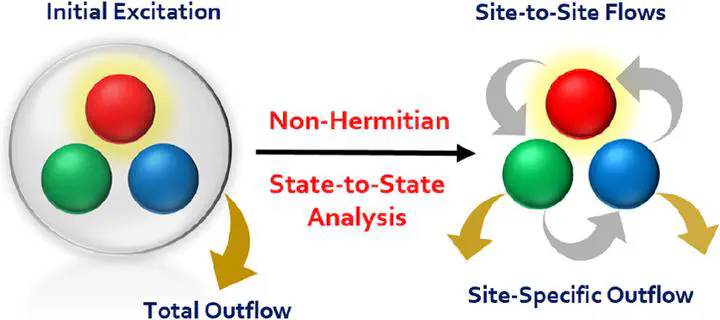Non-Hermitian State-to-State Analysis of Transport in Aggregates with Multiple Endpoints

Abstract
Efficiency of quantum transport through aggregates with multiple endpoints or traps proves to be an emergent and a highly nonequilibrium phenomenon. We present an exact approach for computing the emergent time-scale and amount of extraction specific to particular traps, leveraging a non-Hermitian generalization of the recently introduced state-to-state transport analysis [Bose and Walters, J. Chem. Theory Comput. 2023, 19, 15, 4828–4836]. This method is able to simultaneously account for the coupling between various sites, the many-body effects brought in by the vibrations and environment held at a nonzero temperature, and the local extraction processes described by non-Hermitian terms in the Hamiltonian. In fact, our non-Hermitian state-to-state analysis goes beyond merely providing an emergent loss time-scale. It can parse the entire dynamics into the constituent internal transport pathways and loss to the environment. We demonstrate this method using examples of exciton transport in a lossy polaritonic cavity. The loss at the cavity and the extraction of the exciton from a terminal molecule provide competing mechanisms that our method helps to unravel, revealing nonintuitive physics. This non-Hermitian state-to-state analysis technique contributes an important link to understanding and elucidating the routes of transport in open quantum systems.